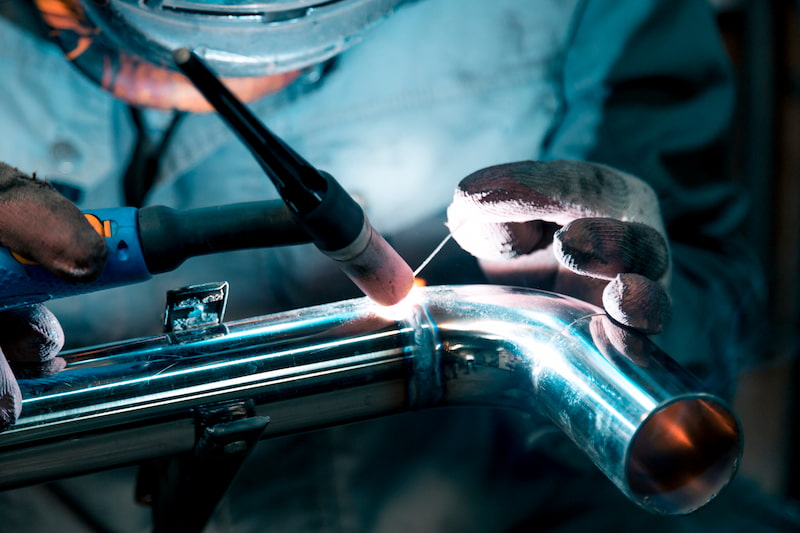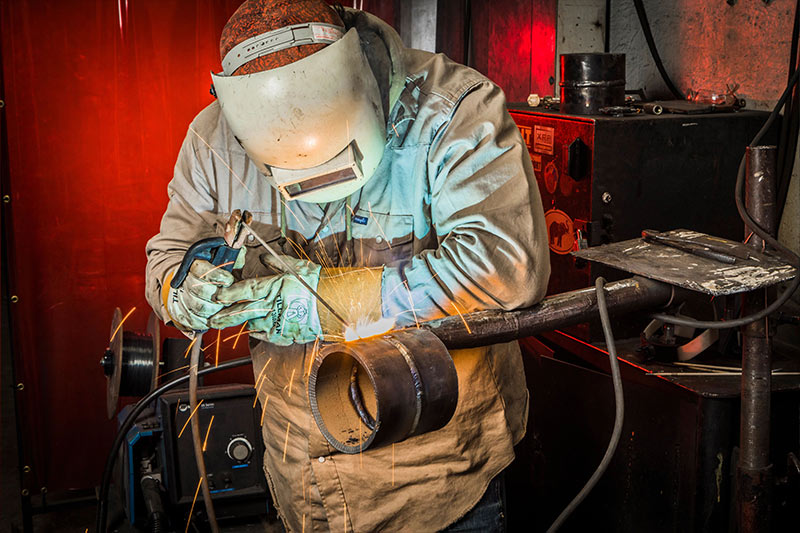Usual Welding Repair Issues and Just How to Address Them Properly
Welding fixings frequently experience a series of concerns that can jeopardize the honesty of the final item. Typical troubles consist of poor infiltration, porosity, and imbalance, to name a few. Each problem provides one-of-a-kind challenges that need specific strategies for resolution. Understanding these concerns is necessary for welders aiming to boost their abilities and results. This discussion will certainly check out these usual welding repair work problems and efficient techniques to address them.
Poor Penetration
Poor infiltration happens when the weld metal falls short to completely fuse with the base material, resulting in weak joints and potential architectural failings. This problem frequently stems from insufficient warm input, incorrect electrode angle, or inappropriate welding speed. Welders might come across insufficient infiltration because of a mistake of the required parameters for a details product density or type. In addition, contamination on the base product's surface area can prevent efficient bonding, aggravating the issue. To address poor infiltration, welders must guarantee proper settings on their tools and preserve a tidy job surface. Regular assessment of welds is advised to determine any kind of shortages early, enabling timely modifications and the prevention of endangered structural integrity in bonded assemblies.
Porosity
Porosity is an usual issue in bonded joints that shows up as small gas bubbles caught within the weld steel. This defect can endanger the integrity of the weld, causing decreased stamina and prospective failure under anxiety. Montana Mobile Welding and Repair. Porosity typically occurs from contamination, moisture, or incorrect welding strategies, which permit gases to leave right into the liquified weld swimming pool. To attend to porosity, welders should assure appropriate surface area preparation, preserve a clean workplace, and utilize appropriate welding parameters. Additionally, choosing the appropriate filler material and securing gas can minimize gas entrapment. Normal examination and testing of welds can help identify porosity early, assuring timely restorative activities are taken, consequently protecting the quality and reliability of the bonded framework
Imbalance
Misalignment in welding can occur from various aspects, consisting of incorrect setup and thermal expansion. Understanding the source is vital for efficient resolution. Several modification methods are available to straighten elements and assure structural stability.
Reasons of Imbalance
Welding imbalance frequently comes from a variety of underlying problems that can endanger architectural stability. One primary cause is improper fit-up of parts before welding, which can cause gaps and unequal surfaces. Variations in thermal development throughout the welding process can also lead to distortion, particularly if the materials being signed up with have various coefficients of development. In addition, insufficient fixturing and clamping might fall short to hold components securely in position, resulting in movement during welding. Inadequately kept tools, including welding devices and devices, might present incongruities in the weld bead, more adding to misalignment. Driver error, stemming from inadequate training or experience, can likewise play a substantial duty in creating misaligned welds.

Modification Methods Readily Available
Dealing with imbalance successfully needs a mix of restorative methods tailored to the details concerns at hand. One common approach is using jigs or components to hold components in the appropriate position throughout welding, guaranteeing constant positioning. In addition, preheating the products can help in reducing distortion and enhance fit-up. For substantial imbalance, mechanical adjustment methods, such as using hydraulic jacks or clamps, can be used to fix the position before welding. Post-weld warmth treatment may also be required to alleviate tensions created by misalignment. Finally, mindful examination and change throughout the setup phase can avoid imbalance concerns from coming to be significant issues, promoting a smoother welding procedure and enhancing overall architectural integrity.
Distortion
Distortion is a common obstacle in welding that can develop from different elements, including unequal heating & cooling. Understanding the causes of distortion is crucial for implementing effective prevention methods. Addressing this problem not just boosts structural stability however likewise enhances the general high quality of the weld.
Root causes of Distortion
When based on the extreme warm of welding, products typically undergo changes that can result in distortion. This phenomenon primarily arises from thermal expansion and contraction throughout the welding procedure. As the weld location heats up, the material broadens; upon air conditioning, it contracts, which can produce internal tensions. Furthermore, unequal home heating throughout a workpiece can intensify these tensions, leading to warping or flexing. The kind of product likewise plays a substantial role; steels with differing thermal conductivity and coefficients of expansion might react differently, causing uncertain distortions. Inadequate joint layout and inadequate fixturing can contribute to imbalance throughout welding, boosting the likelihood of distortion. Understanding these reasons is important for efficient welding fixing and avoidance techniques.
Prevention Techniques
Reliable avoidance strategies for distortion during welding focus on managing warmth input and guaranteeing proper joint design. Preserving a consistent heat input helps to decrease thermal expansion and tightening, which can result in distortion. Using methods such as preheating the workpiece can additionally lower the temperature level slope, advertising consistent heating. Furthermore, selecting appropriate joint designs, such as T-joints or lap joints, can improve security and reduce tension concentrations. Implementing correct fixturing to secure the workpieces in position even more help in keeping placement during the welding process. Staggered welding series can disperse warm extra uniformly, avoiding localized distortion. By applying these methods, welders can substantially lower the chance of distortion and boost the total top quality of their welds.
Fracturing
Fracturing is an usual issue experienced in welding repair work, commonly arising from numerous aspects such as inappropriate air conditioning rates, material option, or insufficient joint preparation. The occurrence of fractures can substantially endanger the integrity of the weld, causing potential failings during procedure. To resolve this concern, welders have to initially analyze the root creates, making certain that materials are suitable and properly selected for the particular application. In addition, controlling the air conditioning price during the welding procedure is vital; fast cooling can generate tension and lead to cracking. Correct joint layout and prep work likewise add to lessening the danger. Go Here Applying these techniques can boost weld top quality and sturdiness, ultimately minimizing the likelihood of breaking in finished weldments.

Incomplete Blend
A significant issue in welding repairs is incomplete fusion, which occurs when the weld steel does not effectively bond with the base material or previous weld passes - Belgrade Welding. This flaw can result in weak points in the joint, potentially compromising the honesty of the welded framework. Elements adding to incomplete combination include insufficient warmth input, improper welding technique, and contamination of the surface areas being joined. To address this concern properly, welders must ensure proper pre-weld cleansing and surface area preparation, in addition to change their welding specifications to achieve sufficient infiltration and combination. read the full info here Routine assessment throughout the welding procedure can additionally help recognize insufficient blend early, permitting prompt restorative steps to enhance the overall quality of the weld
Overheating
While welding repair services can improve architectural honesty, overheating presents a significant challenge that can result in product degradation. Too much heat during welding can change the mechanical residential or commercial properties of steels, causing reduced stamina, enhanced brittleness, and warping. This phenomenon is particularly vital in high-stress applications where structural reliability is extremely important. Recognizing getting too hot can involve visual assessments for discoloration or distortion, in addition to keeping an eye on temperature level throughout the welding process. To reduce the threats connected with overheating, welders must employ ideal techniques, such as managing heat input, readjusting traveling speed, and making use of ideal filler materials. In addition, carrying out pre- and post-weld heat treatments can help restore material homes and boost the total top quality of the repair work, making sure long-lasting efficiency and safety and security.
Frequently Asked Concerns
What Are the Common Signs of a Welding Issue?

How Can I Evaluate My Welds for Top quality?
To check welds for high quality, one can make use of visual assessments, ultrasonic testing, and radiographic techniques. Each technique guarantees structural stability, identifies problems, and verifies adherence to specified criteria, inevitably improving the reliability of the bonded joints.
What Security Precautions Should I Take While Welding?
When welding, one need to focus on safety and security by putting on ideal personal protective tools, ensuring correct ventilation, protecting combustible materials away, preserving a clean anchor workspace, and being aware of environments to stop mishaps and injuries.
Can I Fix a Weld Without Redesigning the Entire Joint?
Repairing a weld without redoing the whole joint is possible, relying on the damages (Welding). Methods such as grinding, including filler product, or utilizing a welding procedure can efficiently resolve details flaws while preserving the surrounding framework
What Devices Are Necessary for Reliable Welding Fixes?
Essential devices for efficient welding repairs include a welding maker, wire brush, mill, safety gear, clamps, and filler materials. Each tool plays a vital duty in guaranteeing top quality and security during the repair work process. Porosity commonly develops from contamination, wetness, or improper welding methods, which permit gases to leave right into the liquified weld swimming pool. Improperly kept equipment, including welding equipments and devices, might present incongruities in the weld grain, further adding to misalignment. When subjected to the intense warm of welding, materials typically go through adjustments that can lead to distortion. Cracking is a common issue come across in welding fixings, frequently resulting from numerous aspects such as inappropriate cooling rates, material choice, or inadequate joint preparation. A considerable problem in welding repair work is insufficient fusion, which happens when the weld metal does not adequately bond with the base material or previous weld passes.